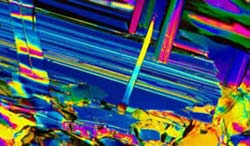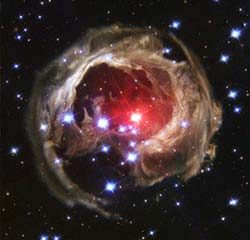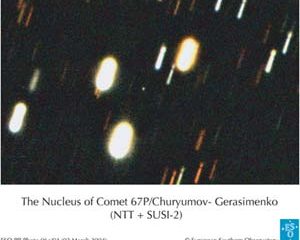This area deals with the fundamental laws and building blocks of nature and how they interact, the properties and the behavior of matter, and research into space and time and their structures.
innovations-report provides in-depth reports and articles on subjects such as astrophysics, laser technologies, nuclear, quantum, particle and solid-state physics, nanotechnologies, planetary research and findings (Mars, Venus) and developments related to the Hubble Telescope.

A new study by theoretical physicists at the University of Toronto and the University of California at Los Angeles (ULCA) could bring scientists one step closer to the dream of a superconductor that functions at room temperature, rather than the frigid temperatures more commonly found in deep space.
The findings, which appear in the March 4 issue of the journal Nature, identify three factors that explain a perplexing pattern in the temperatures at which multi-layered ceramic materials become

Using a British radio telescope called the Very Small Array (VSA), located on the flanks of Mount Teide in Tenerife, astronomers from the Universities of Manchester and Cambridge and the Instituto de Astrofisica de Canarias (IAC) have made measurements of the Cosmic Microwave Background (CMB) – radiation left over from the Big Bang – which shed new light on events in the first minute fraction of the Universe’s existence.
By combining their results with those of NASA’s Wilkinson Microwa

The need for advanced highly integrated photonic circuits stems from the capacity expansion of telecommunications infrastructures driven by ever-increasing customer demand. Novel design and manufacturing technologies for advanced photonic circuits emerging from PICCO could meet this need.
Ready for mass production
The work of the IST programme-funded project has provided evidence that functional photonic circuits can be created using state-of-the-art deep UV lithography. T

“Starry Night”, Vincent van Gogh’s famous painting, is renowned for its bold whorls of light sweeping across a raging night sky. Although this image of the heavens came only from the artist’s restless imagination, a new picture from the NASA/ESA Hubble Space Telescope bears remarkable similarities to the Van Gogh work, complete with never-before-seen spirals of dust swirling across trillions of kilometres of interstellar space.
This image, obtained with the Advanced Camera for Surveys on 8

In the morning of March 2, the Rosetta spacecraft was launched on board an Ariane-5 launcher from the European Spaceport in Kourou, French Guiana. The European Space Agency (ESA) spacecraft will be the first to land on a comet.
Before the launch, and as a salute to their colleagues at ESA, astronomers used the New Technology Telescope at the European Southern Observatory (ESO) of La Silla in Chile to image Rosetta’s target, Comet 67P/Churyumov-Gerasimenko, an approximately 4 kilometre size

Physical Review E publishes paper on fusion experiment conducted with upgraded measurement system
Physical Review E has announced the publication of an article by a team of researchers from Rensselaer Polytechnic Institute (RPI), Purdue University, Oak Ridge National Laboratory (ORNL), and the Russian Academy of Science (RAS) stating that they have replicated and extended previous experimental results that indicated the occurrence of nuclear fusion using a novel approach for plasma co